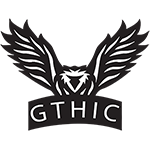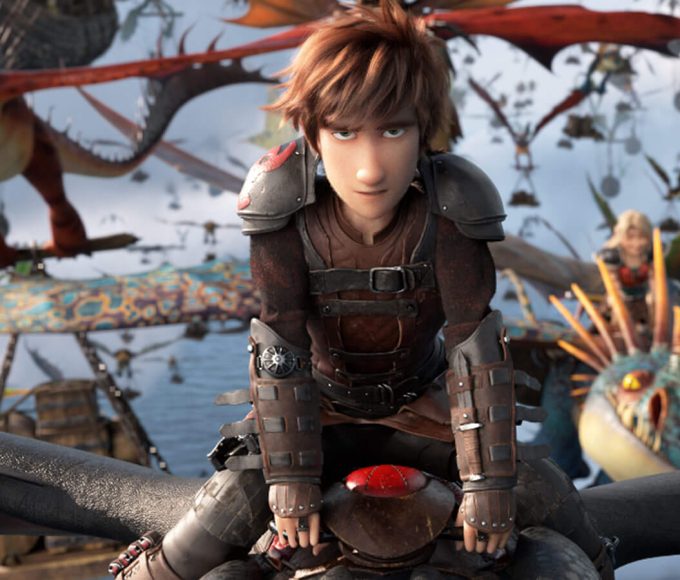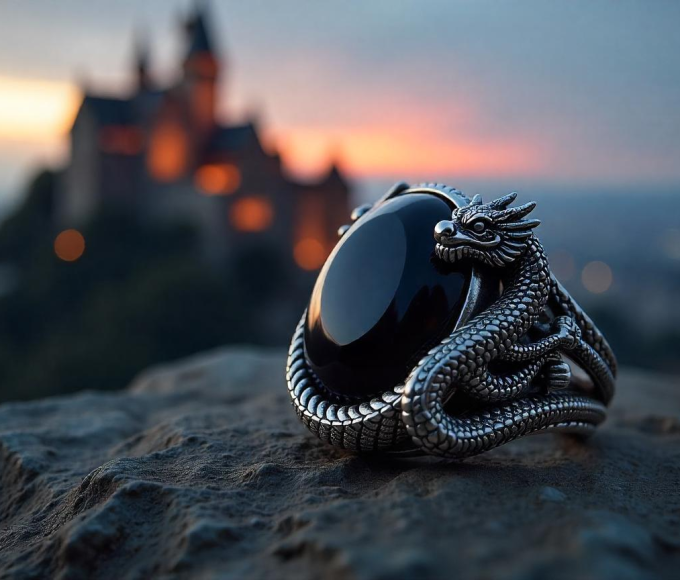In the realm of Norse mythology, few artifacts are as iconic as Thor’s Hammer, Mjölnir. This legendary weapon, wielded by the god of thunder himself, Thor, carries with it a rich history, imbued with power and significance that transcends ancient beliefs. In this exploration, we journey through the enchanting world of Mjölnir, uncovering its origins, powers, and enduring cultural legacy.
Mythical Genesis: Forged by the Hands of Dwarven Craftsmen
In the heart of the Norse cosmos, amidst the divine splendors of Asgard, the legend of Mjölnir takes root. At the center of this tale are Brokkr and Sindri, dwarf brothers renowned for their unmatched prowess in the art of crafting. Their hands, however, skilled beyond measure, were destined for greatness.

One fateful day, the duo received a challenge of celestial proportions – to fashion an unparalleled weapon worthy of the gods themselves. It was to be a symbol of power and a testament to their exceptional craftsmanship. The stakes were nothing short of divine, for this weapon would become none other than Thor’s Hammer, Mjölnir.
When Mjölnir was completed, it was more than just a weapon. It became a symbol of strength, protection, and a potent tool for Thor, the god of thunder and lightning. Moreover, the hammer was imbued with magical properties, allowing Thor to control storms and wield tremendous power.
Elements of Thor’s Hammer: Solid and Powerful Appearance
Thor’s hammer, Mjölnir, is typically depicted as a large, blocky hammer with a short handle. Here are some specific elements about its appearance:
- Rectangular Head: The head of Mjölnir is typically depicted as rectangular or square-shaped, with clear, defined angles. Furthermore, this geometric design adds to its powerful aesthetic, conveying a sense of precision and purpose.
- Intricate Detailing: The head of Mjölnir some feature intricate patterns, engravings, or Nordic runes. These details are often etched into the surface, adding depth and character to the appearance of the hammer. These markings can hold symbolic meaning.
THOR’S HAMMER VALKNUT STAINLESS STEEL VIKING NECKLACE
- Short Handle: Mjölnir has a relatively short handle, which is sturdy and designed to be wielded by a god of great strength. Generally, the handle is depicted as being stout and easy to grip.
- Leather Strap: In some Mjölnirs, a leather strap is attached to the handle. This strap serves both a practical and symbolic purpose. It allows Thor to throw the hammer and have it return to his hand, and it is also a distinctive feature of Mjölnir’s design.
In a word, the visual representation of Mjölnir is one of strength, craftsmanship, and divine power. Its iconic design has made it a symbol of Thor’s might and a revered artifact in Norse mythology and beyond.
Epics and Sagas: Mjölnir’s Role in Norse Mythology
Mjölnir’s role in Norse mythology is indeed rich and multifaceted, with the hammer being an integral part of Thor’s legendary adventures. One of the most prominent aspects of Mjölnir’s role in Norse mythology is its use in battles against powerful adversaries, particularly giants. Thor, wielding Mjölnir, is often depicted in epic clashes against fearsome giant creatures. The hammer’s immense power allows Thor to strike down foes and protect both gods and humans from these formidable threats. These battles are not only displays of Thor’s physical prowess but also demonstrate Mjölnir’s unparalleled destructive force.

Additionally, Mjölnir is also intimately tied to the stability of the cosmos in Norse mythology. Thor, as the god of thunder and lightning, is responsible for maintaining order in the realms. Moreover, Mjölnir serves as the instrument through which Thor exerts control over storms, ensuring that the natural order is maintained. This cosmic aspect of Mjölnir’s role highlights its significance in the broader context of the Norse universe.
Beyond its destructive capabilities, Mjölnir is a symbol of protection and safety. Thor is seen as a guardian figure, using Mjölnir to shield both gods and humans from various threats. The hammer becomes a source of hope and reassurance for those who look to Thor for defense.
Thor’s Hammer in Modern Culture: A Continuation of Legacy
Beyond the annals of ancient lore, however, Thor’s Hammer’s legacy endures in contemporary culture. Here are some details about Thor’s Hammer’s presence in modern culture:
- Literature and Comics: Thor’s Hammer has been a prominent feature in various forms of literature and graphic novels. In modern comics, particularly those published by Marvel Comics, Thor wields Mjölnir as he battles a wide array of foes. This portrayal has introduced a new generation to the legend of Thor and his iconic hammer.

- Marvel Cinematic Universe (MCU): Perhaps one of the most significant contributions to Mjölnir’s modern cultural presence is its prominent role in the Marvel Cinematic Universe. In a series of blockbuster films, Mjölnir is depicted as an awe-inspiring weapon, and Thor, played by Chris Hemsworth, is shown wielding it with incredible power. The hammer’s unique properties, such as the worthiness enchantment, are integral to the MCU’s portrayal of Thor.
- Tattoos and Jewelry: Many people choose to get tattoos or wear Viking jewelry inspired by Mjölnir. Because these symbols can carry personal significance, representing qualities like resilience, courage, and the ability to overcome challenges. Mjölnir-inspired jewelry and tattoos are popular among those who identify with the hammer’s legendary attributes. For example, in some belief systems, wearing a Mjölnir necklace is thought to offer protection against negative energies or potential harm. It can act as a talisman, providing a sense of security and courage.
NORDIC THOR’S HAMMER STERLING SILVER VIKING PENDANT
- Video Games: Mjölnir is frequently featured in video games, where players can take on the role of Thor and wield the hammer’s immense power. However, these games allow players to experience firsthand the sensation of commanding thunder and lightning, adding a dynamic element to the portrayal of Mjölnir.
In summary, Thor’s Hammer’s legacy in modern culture is a testament to its enduring appeal and the timeless themes it represents. It continues to be a symbol of strength, protection, and the unyielding spirit in the face of challenges, resonating with people across generations and cultures.
Conclusion
When we conclude our journey through the realms of Norse mythology and the enduring legend of Mjölnir, we are left with a profound understanding of the hammer’s significance. From its mythical creation to its portrayal in modern media, Mjölnir remains an emblem of power, valor, and the eternal struggle against darkness. Today, furthermore, its legacy continues to shape our cultural narrative, a testament to the enduring power of ancient myth.
FAQs:
1. The name of Thor’s hammer is Mjolnir?
Yes. The name of Thor’s hammer in Norse mythology is “Mjölnir.” It is one of the most iconic and powerful weapons in Norse mythology and plays a central role in the adventures and battles of the god of thunder, Thor. Generally, the name “Mjölnir” is often translated as “the grinder” or “the crusher,” reflecting the hammer’s formidable and destructive capabilities.
2. How to pronounce “Thor’s Hammer” and “Mjölnir”?
1. Thor’s Hammer:
- Thor: Pronounced as “thawr” with a hard “th” sound, similar to the word “thorn,” and a short “o” sound like in “more.”
- Hammer: Pronounced as “ham-er,” with emphasis on the first syllable.
So, “Thor’s Hammer” is pronounced as “Thawr’s Ham-er.”
2. Mjölnir:
- Mj: Pronounced like the English “mi” in “mitten.”
- ö: Sounds like the “u” in the French word “du” or the German word “schön.”
- ln: This cluster makes a sound similar to the English “ln” in “kiln.”
- ir: Pronounced like “ear.”
Therefore, “Mjölnir” is pronounced something like “myohl-neer” with the emphasis on the first syllable.
3. How does one become worthy to wield Thor’s Hammer, Mjölnir?
In Norse mythology, worthiness to wield Mjölnir is determined by a combination of moral integrity, virtue, and inner strength. It is not solely a matter of physical prowess, but also about possessing qualities such as courage, honor, and a strong sense of justice. This worthiness enchantment is central to Mjölnir’s mystique.
4. What are the powers of Thor’s Hammer, Mjölnir?
Mjölnir grants Thor control over thunder and lightning. It also enhances his strength and durability, allows him to fly, and is equipped with a worthiness enchantment, ensuring only those deemed worthy can wield it. Additionally, Mjölnir can return to Thor’s hand when thrown, making it an incredibly versatile and formidable weapon.
5. What does wearing Thor’s Hammer mean?
Wearing Thor’s Hammer, known as Mjölnir, holds various meanings for different individuals. Primarily, it symbolizes strength, protection, and courage in the face of adversity. It can also signify a connection to Norse mythology and its values, such as honor, justice, and resilience. Additionally, for some, wearing Mjölnir serves as a talisman for protection or represents a cultural identity tied to Viking heritage. Ultimately, the significance of wearing Thor’s Hammer is a personal choice, and it can carry unique and deeply meaningful interpretations for each individual.
Daisy
Daisy Wang is a talented and passionate writer known for her captivating storytelling and love for literature. With a diverse background and a bachelor's degree in English Literature, Daisy brings a unique perspective to her work. Her areas of expertise span various subjects, including history, fashion, and lifestyle. Through her words, Daisy aims to inspire curiosity, foster meaningful connections, and leave a lasting impact on readers.
Recent Posts
Your Goth Christmas Style Guide
11/25/2025Cybergoth Aesthetic
11/11/2025Categories
Related Articles
A Guide to How to Train Your Dragon Species
Welcome, fellow dragon enthusiasts and aspiring Viking trainers! Have you ever wondered...
ByAlicia06/24/2025Grunge Aesthetic: A Style Revolution
The world of fashion is a cyclical beast, constantly re-inventing and re-interpreting...
ByAlicia06/03/2025What Is Health Goth
In 2024, “Health Goth” which is hot in 2010s gets back from...
ByAlicia05/27/2025Dragon Rings: From Mythology to Modern Symbolism
The dragon, a mythical creature revered across cultures, has long been a...
ByAlicia03/18/2025














Leave a comment